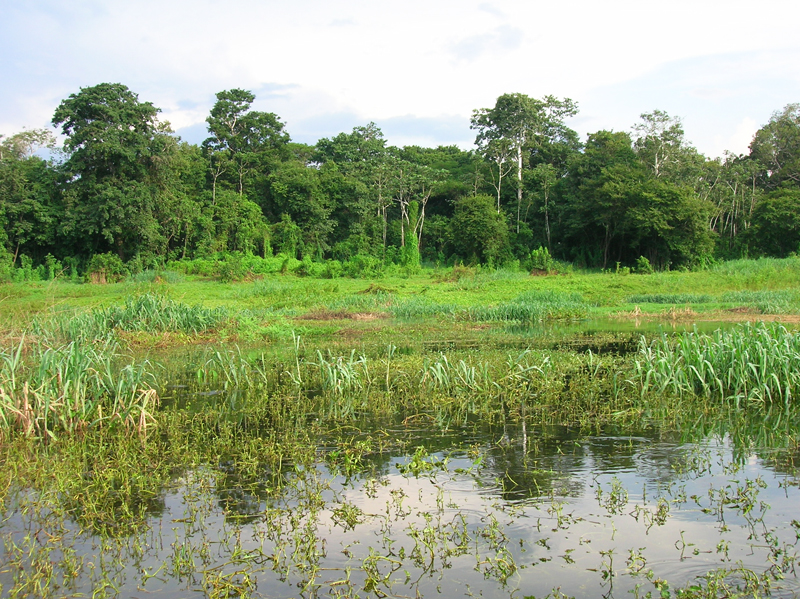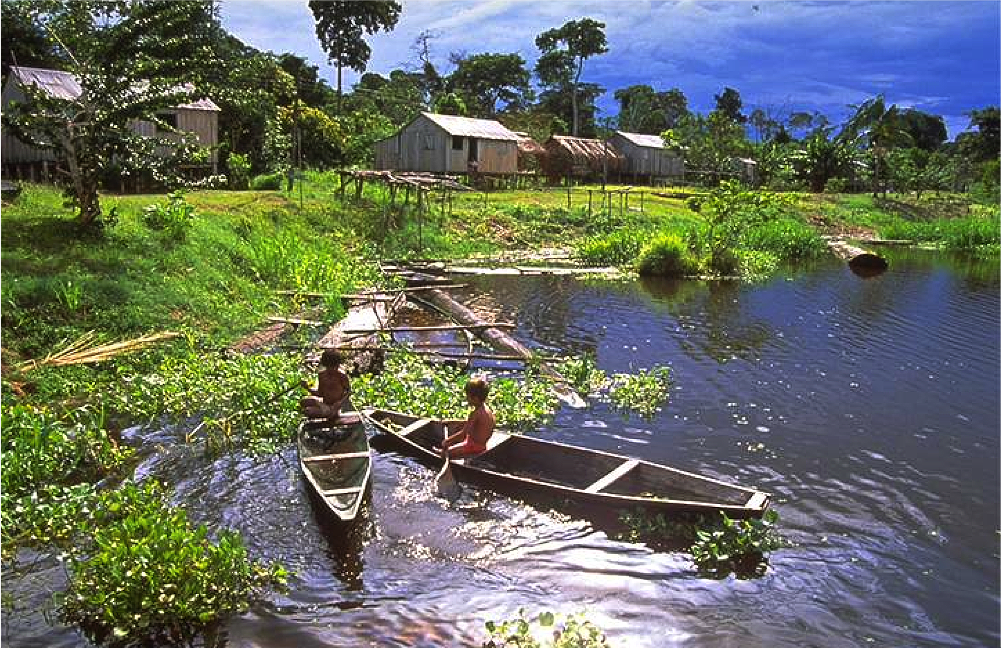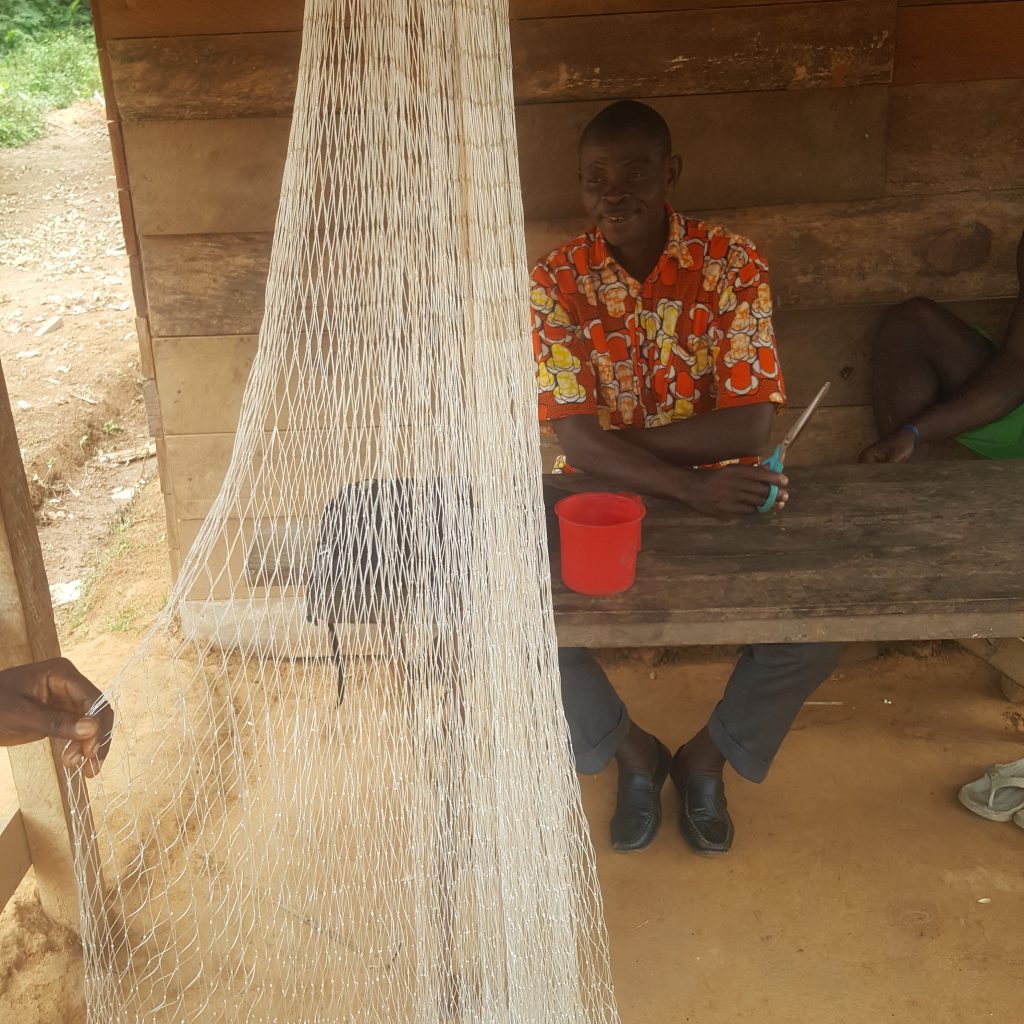
SYNERGIZE means to “interact or cooperate with one or more other agents to produce a joint effect greater than the sum of effects achieved separately”. This newly project funded by Brazil’s National Research Council aims to achieve this in an Amazonian context by fostering a multi- and trans-disciplinary network to understand how human-driven and climate-associated forest disturbances affect Amazonian aquatic and terrestrial biodiversity and ecosystem resilience. We will bring together researchers with complementary expertise and use modeling approaches of large multi-scale datasets pertaining to distinct Amazonian regions to synthesize knowledge and promote cost-effective and integrative solutions for landscape management, biodiversity conservation, and ecosystem recovery. This project is led by Joice Ferreira from Embrapa, the largest state-owned research corporation in Brazil; more information can be found here.
Working and learning with stakeholders to preserve Amazon River floodplain biodiversity and fisheries in the face of climate change

Our new project — funded by BNP Paribas — will combine remote sensing, hydrologic modeling, fisheries and habitat modeling, and participatory work with local riverine communities to develop policies and strategies to preserve Amazonian biodiversity and fisheries in the face of climate change. Involving researches from Brazil, France, UK, Canada, US, our lab’s contribution to this project will be developing empirical models of fish catch for all key commercial taxa, to project the effects on fisheries catch of altered river hydrology induced by potential future impacts of climate change.

Funded by NSF, this project involving six countries will develop scenarios of biodiversity and ecosystem services for selected “whitewater” river floodplains of the lowland Amazon. Seasonally inundated by nutrient-rich sediments, these floodplains have historically been centers for human settlements practicing subsistence agriculture supplemented by fishing and hunting; whitewater floodplain districts are thus the most densely populated rural areas in central Amazonia. Over the past several decades, commercial jute cultivation, commercial fisheries, and the expansion of cattle ranching have disrupted traditional patterns of resource use. These impacts have been felt most heavily on the lower Amazon, where about half the floodplain forest cover was lost since the late 1970s. This reduced floodplain forest cover threatens both biodiversity and ecosystem services, since fish biodiversity and fisheries yields are strongly associated with floodplain forest cover. Our project group will assess the dependency of fishery yields by local fishing communities on floodplain hydrological connectivity and habitat structure.
Funded by CIFOR, this project will assess the sustainability of fisheries in rivers of Cameroon and potential fish-forest relationships.

 NEW PROJECT: Management of commercially important fish populations requires understanding of fish population dynamics. As such, ongoing development of management efforts for Arapaima spp.—a widely overexploited fish species of the Amazon Basin—must be based on adequate scientific understanding of their biology and ecology. Previous studies have described the migration of arapaima in floodplain ecosystems of the Amazon. Many upland lakes, called ria lakes, which are surrounded by dry land, have populations of arapaima that are commercially exploited. In some cases, these lakes are connected to floodplain ecosystems, allowing for fish migration between these ecosystems. Many fishing communities inhabiting ria lakes of the Amazon are currently seeking to develop management systems for arapaima. However, lack of understanding of the migration of arapaima in ria lakes makes it difficult to devise effective management actions. The objective of the present study is to unravel the migratory behavior of arapaima in a ria lake of the Amazon.
NEW PROJECT: Management of commercially important fish populations requires understanding of fish population dynamics. As such, ongoing development of management efforts for Arapaima spp.—a widely overexploited fish species of the Amazon Basin—must be based on adequate scientific understanding of their biology and ecology. Previous studies have described the migration of arapaima in floodplain ecosystems of the Amazon. Many upland lakes, called ria lakes, which are surrounded by dry land, have populations of arapaima that are commercially exploited. In some cases, these lakes are connected to floodplain ecosystems, allowing for fish migration between these ecosystems. Many fishing communities inhabiting ria lakes of the Amazon are currently seeking to develop management systems for arapaima. However, lack of understanding of the migration of arapaima in ria lakes makes it difficult to devise effective management actions. The objective of the present study is to unravel the migratory behavior of arapaima in a ria lake of the Amazon.
The study will be conducted in the Piagaçu-Purus Sustainable Development Reserve, located in the lower Purus River, Amazon Basin, Brazil. The study will be based on the use of telemetry technology. It is funded by the Instituto Piagaçu, and it is done in close collaboration with Dr. Eduardo Martins of Carleton University and Dr. Jansen Zuanon of the Instituto Nacional de Pesquisa da Amazônia.
[googlemaps https://maps.google.com/maps/ms?msa=0&msid=212422201464487231331.0004f8d2594f67ee79ffc&hl=en&ie=UTF8&t=h&ll=-4.68593,-61.842041&spn=2.737143,3.290405&z=8&output=embed&w=600&h=500]
 NEW PROJECT: Freshwater ecosystems in the Amazon are among the most biological diverse and productive in the world. Current infrastructure development (e.g., hydroelectric dams) is altering the structure and function of these ecosystems. However, detailed ecological assessments of the impacts created by such dams on the integrity of these freshwater ecosystems are lacking. With funding from WWF-Brasil, the project will assess the potential impacts of hydroelectric dams on the lateral and longitudinal connectivity of Amazon freshwater ecosystems. Participants include Marcia N. Macedo (Woods Hole Research Center).
NEW PROJECT: Freshwater ecosystems in the Amazon are among the most biological diverse and productive in the world. Current infrastructure development (e.g., hydroelectric dams) is altering the structure and function of these ecosystems. However, detailed ecological assessments of the impacts created by such dams on the integrity of these freshwater ecosystems are lacking. With funding from WWF-Brasil, the project will assess the potential impacts of hydroelectric dams on the lateral and longitudinal connectivity of Amazon freshwater ecosystems. Participants include Marcia N. Macedo (Woods Hole Research Center).
NEW PROJECT: An interdisciplinary project aiming to:
(i) measure historical human impacts on river-floodplains of the Amazon
(ii) quantify relations among fish, forests, grasslands, and human welfare, and
(iii) identify expected outcomes under simulated conditions of increased resource demand and climate change.

The project is funded by the National Aeronautics and Space Administration (NASA). Participants include Laura L. Hess (University of California, Santa Barbara), David G. McGrath and Michael T. Coe (The Woods Hole Research Center), Victoria J. Isaac (the Universidade Federal do Pará, Brazil), and Frank Merry and Greg Amacher (Virginia Tech). Our lab contributes to this project by quantifying and modeling the influences of hydrological alteration and floodplain vegetation cover on fisheries productivity.
Read more about this project.

The hydrology of Amazon river-floodplains is increasingly being impacted by extreme climatic events and land use changes in the uplands. We have assembled an interdisciplinary team of qualified scientists from Virginia Tech, the Woods Hole Research Center, and University of California Santa Barbara to explore the feedbacks of such extreme events on seasonal inundation and, ultimately, on the future productivity of floodplain ecosystems. Funding for this research was recently provided by the National Aeronautics and Space Administration (NASA).